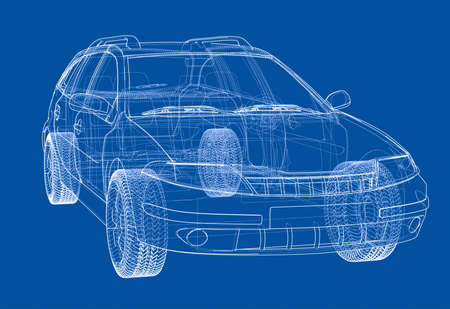1. Understanding Brake Calipers
If you’ve ever wondered how your car actually stops when you press the brake pedal, brake calipers are a huge part of the answer. Brake calipers are a key component of your vehicle’s disc braking system. They may not look like much, but these hardworking parts play a major role in keeping you and your passengers safe on the road.
What Are Brake Calipers?
Brake calipers are metal components that fit over the brake rotors, which are the round discs attached to each wheel. When you step on the brake pedal, hydraulic pressure forces the caliper to squeeze its brake pads against the spinning rotor. This friction slows down your wheels, bringing your car to a stop.
How Brake Calipers Work in the Braking System
| Part | Function |
|---|---|
| Brake Pedal | You press it to start braking |
| Brake Fluid | Carries force from pedal to caliper |
| Brake Caliper | Squeezes pads onto rotor |
| Brake Pads | Create friction with rotor to slow down car |
| Brake Rotor (Disc) | Spins with wheel; slows down when pressed by pads |
Why Brake Calipers Matter for Vehicle Safety
Your car’s ability to stop quickly and reliably depends on healthy brake calipers. Worn-out or malfunctioning calipers can lead to longer stopping distances, uneven braking, or even total brake failure. That’s why it’s so important to keep an eye on your calipers as part of regular maintenance.
2. Essential Brake Caliper Maintenance
Why Regular Brake Caliper Maintenance Matters
Your brake calipers play a crucial role in keeping your vehicle safe on the road. In the U.S., where stop-and-go traffic, varying weather, and long road trips are common, properly maintained brake calipers ensure responsive braking and help prevent costly repairs down the line.
Regular Maintenance Steps for Brake Calipers
1. Visual Inspection
Check your calipers for visible signs of wear, corrosion, or leaks every time you rotate your tires or perform an oil change. Look for uneven pad wear or any buildup of brake dust and grime.
2. Cleaning
Dirt, debris, and winter road salt can stick to your calipers. Use a brake cleaner spray and a soft brush to remove buildup during routine maintenance. This helps prevent sticking or corrosion.
3. Lubrication
Apply high-temperature brake grease to the caliper slide pins and contact points every 12,000 miles or once a year—whichever comes first. This keeps movement smooth and prevents sticking.
4. Check Brake Fluid
Low or dirty brake fluid can affect caliper performance. Inspect your brake fluid level and quality regularly, and top off or replace as recommended in your owners manual.
5. Inspect Boots and Seals
The rubber boots and seals keep dirt out of moving parts. Check them for cracks or tears at least twice a year, especially before and after harsh winter seasons.
Recommended Maintenance Intervals
| Maintenance Task | Recommended Interval (U.S.) |
|---|---|
| Visual Inspection | Every oil change (5,000-7,500 miles) |
| Cleaning Calipers | Twice a year / After winter driving |
| Lubricating Slide Pins | Every 12,000 miles / Annually |
| Brake Fluid Check/Replacement | Check every oil change / Replace every 2 years |
| Inspect Boots & Seals | Semi-annually (Spring/Fall) |
American Best Practices for Brake Caliper Care
- DIY-Friendly: Many American drivers perform basic inspections themselves but rely on certified mechanics for complex repairs.
- Seasonal Checks: Extra attention is given after winter due to road salt exposure in many states.
- Tire Rotations: Pair caliper checks with tire rotations to save time and stay consistent.
- No Power Washing: Avoid direct power washing on brakes—it can force water into seals and cause rusting.
- Squeak/Squeal Attention: Address any unusual noises promptly to avoid further damage.
A Little Effort Goes a Long Way
A few minutes spent on regular brake caliper care can help you avoid bigger headaches later—keeping your ride safe whether you’re commuting daily or heading out on an American road trip adventure.

3. Common Brake Caliper Problems
Brake calipers are critical for safe driving, but they can develop problems over time, especially with the kind of stop-and-go traffic and rough road conditions many U.S. drivers face. Here are some of the most common brake caliper issues you might run into, how to spot them early, and what they could mean for your vehicle.
Sticking Calipers
One frequent issue is sticking calipers. This happens when the caliper doesn’t release the brake pad completely from the rotor after you take your foot off the brake pedal. It can cause your car to pull to one side or make a noticeable squealing or grinding noise. You might also feel extra resistance while driving, like your brakes are partly on all the time.
Signs Your Caliper Is Sticking:
| Symptom | What You’ll Notice |
|---|---|
| Car pulls to one side | Vehicle veers left or right when braking |
| Burning smell | Unusual odor near wheels after driving |
| Uneven brake pad wear | One pad wears out much faster than others |
| Poor fuel economy | You’re visiting the gas station more often |
Seizing Calipers
A seized caliper is more serious. This usually means rust, dirt, or a failed piston has caused the caliper to get stuck in place entirely. When this happens, your brakes may not work properly at all—or they could stay clamped down on the rotor, creating major safety concerns and potentially damaging other parts of your braking system.
Symptoms of Seizing Calipers:
- Difficulty stopping or a spongy brake pedal
- Screeching noises even when not braking
- Vibration in the steering wheel when slowing down
- The wheel feels hot to the touch after driving
Leaking Calipers
Calipers contain hydraulic fluid that’s essential for transferring force from your foot to the brake pads. If a caliper starts leaking, you’ll lose brake fluid and stopping power, which is a serious safety hazard. Leaks often happen due to worn seals or damaged pistons inside the caliper.
How to Spot a Leaky Caliper:
- Puddle of fluid under your car (brake fluid is clear-yellow and slippery)
- Brake warning light on your dashboard
- Mushy or low-feeling brake pedal
- Ineffective braking performance or increased stopping distance
Quick Reference Table: Common Brake Caliper Issues & Early Warning Signs
| Problem | Main Symptom | Early Warning Sign |
|---|---|---|
| Sticking Caliper | Pulls to one side; uneven pad wear | Squealing noise; burning smell |
| Seizing Caliper | Difficult braking; hot wheel; vibration | Screeching sound; spongy pedal |
| Leaking Caliper | Mushy pedal; visible fluid leak | Puddle under car; warning light on dash |
If you notice any of these symptoms while driving around town or on the highway, it’s important to address them as soon as possible to stay safe on the road and avoid more expensive repairs down the line.
4. How to Inspect Your Brake Calipers
Inspecting your brake calipers at home is a great way to catch issues early and keep your car safe on the road. Here’s a simple, step-by-step guide using tools you probably already have in your garage.
What You’ll Need
| Tool | Purpose |
|---|---|
| Jack & Jack Stands | Lift and support your vehicle safely |
| Lug Wrench | Remove the wheels |
| Work Gloves & Safety Glasses | Protect your hands and eyes |
| Flashlight | See into tight spaces |
| Flathead Screwdriver | Pry or move parts if needed |
Step-by-Step Guide
Step 1: Park and Prep Your Car
Park your car on a level surface, engage the parking brake, and turn off the ignition. Put on your gloves and safety glasses for protection.
Step 2: Lift the Vehicle Safely
Use the jack to lift one corner of your car. Secure it with jack stands before removing any wheels. Never rely solely on the jack!
Step 3: Remove the Wheel
Loosen and remove the lug nuts with your lug wrench. Set the wheel aside to expose the brake caliper assembly.
Step 4: Visually Inspect the Caliper
- Look for leaks around the caliper or brake line connections (a sign of worn seals).
- Check for rust, cracks, or obvious damage on the caliper body.
Step 5: Check Brake Pads and Movement
- Inspect pad thickness—if they look thin (less than 1/8 inch), they may need replacement.
- Try to gently wiggle the caliper by hand; it should feel secure, not loose or wobbly.
Step 6: Test Caliper Operation (Optional)
If you’re comfortable, use a flathead screwdriver to gently press against the caliper piston (with pads still installed). It should retract smoothly with steady pressure. If it’s stuck or hard to move, there may be an internal issue.
Step 7: Reassemble and Lower Your Car
- Reinstall the wheel and tighten lug nuts by hand.
- Lower the car off the jack stands using your jack.
- Tighten lug nuts fully once the car is back on the ground.
Quick Reference Table: What to Look For When Inspecting Calipers
| Symptom | What It Means |
|---|---|
| Fluid Leaks | Poor sealing, needs repair or replacement |
| Rust/Corrosion | Might lead to sticking or failure over time |
| Pads Uneven/Worn Thin | Pads or caliper may need attention soon |
| Piston Hard to Move | Piston may be seized, needs servicing |
This hands-on inspection can help spot common brake caliper problems before they become dangerous. Remember, if you find anything unusual during your check, it’s always smart to consult a professional mechanic for further diagnosis or repairs.
5. DIY Repair and When to Call a Pro
Basic DIY Repair Tips for Minor Caliper Issues
If you notice minor problems with your brake calipers—like squeaking, sticking, or uneven braking—you might be able to handle some basic fixes in your garage. Here are a few simple tips to get you started:
Step-by-Step DIY Caliper Fixes
| Issue | DIY Solution | Tools Needed |
|---|---|---|
| Squeaky Calipers | Clean caliper and apply brake lubricant to the contact points. | Brake cleaner, brake grease, rag |
| Sticking Caliper Piston | Carefully retract the piston using a caliper tool; check for dirt or rust, clean as needed. | Piston tool, brake cleaner, brush |
| Loose Caliper Bolts | Tighten bolts to the manufacturers recommended torque. | Socket set, torque wrench |
| Minor Brake Fluid Leak at Caliper | Tighten bleeder screws or replace worn rubber seals if youre comfortable doing so. | Wrench, new seals (if needed) |
When to Call a Professional Mechanic
While tackling small issues can save money and keep your brakes in shape, some problems should only be handled by an experienced brake specialist. Don’t risk your safety—if you notice any of the following signs, it’s time to visit a trusted shop:
- The brake pedal feels spongy or sinks to the floor.
- You hear grinding noises when braking.
- You see significant fluid leaks from the caliper area.
- The car pulls strongly to one side when braking.
- Your ABS warning light is on.
- You’re unsure how to proceed with repairs.
DIY vs. Pro: Quick Comparison
| Situation | DIY OK? | Call a Pro? |
|---|---|---|
| Squeaks & minor cleaning | Yes | No |
| Piston wont retract/stuck hard | No | Yes |
| Major fluid leak/ABS issues | No | Yes |
Your Safety Comes First!
If you’re ever in doubt about your brake calipers or overall brake performance, don’t hesitate to reach out to a professional mechanic. Keeping your brakes in top shape is essential for your safety—and everyone else’s—on American roads.

